meteor
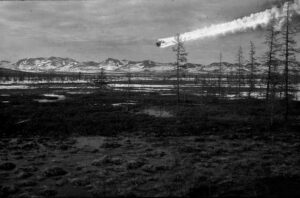 Most of us don’t really think much about the possibility of a meteor hitting the Earth, and the reality is that it’s pretty rare…at least one of much size. Most of them burn up as they enter our atmosphere, and most often the ones that do hit are so small that they do little damage. The Tunguska event a definite exception to that rule. Coming in from the east-southeast, and at and incredible speed of about 60,000 miles per hour, but amazingly still not actually impacting the Earth, it was still classified as an impact event, even though no impact crater has been found. Instead, the object is thought to have disintegrated at an altitude of 3 to 6 miles above the surface, rather than actually impacting the Earth. The meteor did not simply fall apart or burn up, but rather it blew up in what was estimated as a 12-megaton explosion, near the Podkamennaya Tunguska River in Yeniseysk Governorate, which is now Krasnoyarsk Krai, Russia, on the morning of June 30, 1908.
Most of us don’t really think much about the possibility of a meteor hitting the Earth, and the reality is that it’s pretty rare…at least one of much size. Most of them burn up as they enter our atmosphere, and most often the ones that do hit are so small that they do little damage. The Tunguska event a definite exception to that rule. Coming in from the east-southeast, and at and incredible speed of about 60,000 miles per hour, but amazingly still not actually impacting the Earth, it was still classified as an impact event, even though no impact crater has been found. Instead, the object is thought to have disintegrated at an altitude of 3 to 6 miles above the surface, rather than actually impacting the Earth. The meteor did not simply fall apart or burn up, but rather it blew up in what was estimated as a 12-megaton explosion, near the Podkamennaya Tunguska River in Yeniseysk Governorate, which is now Krasnoyarsk Krai, Russia, on the morning of June 30, 1908.
The explosion was over the sparsely populated Eastern Siberian Taiga, which likely saved many lives, but 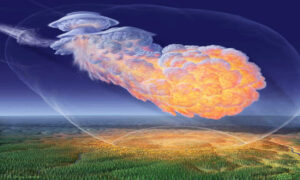 flattened an estimated 80 million trees over an area of 830 square miles of forest. The people who did witness the explosion, from a great distance, of course, reported that at least three people may have died in the event. The explosion is generally attributed to a meteor air burst, which is the atmospheric explosion of a stony asteroid approximately 160–200 feet in size. The Tunguska event remains the largest impact event on Earth in recorded history, though it is assumed that much larger impacts have occurred in times before history was recorded. An 12-megaton explosion could destroy a large city. Of course, events like this and even smaller ones have caused scientists to attempt to figure out ways to avoid these “direct hits” in the future…a rather large job, since moving the Earth out of the way of asteroids is really not an option.
flattened an estimated 80 million trees over an area of 830 square miles of forest. The people who did witness the explosion, from a great distance, of course, reported that at least three people may have died in the event. The explosion is generally attributed to a meteor air burst, which is the atmospheric explosion of a stony asteroid approximately 160–200 feet in size. The Tunguska event remains the largest impact event on Earth in recorded history, though it is assumed that much larger impacts have occurred in times before history was recorded. An 12-megaton explosion could destroy a large city. Of course, events like this and even smaller ones have caused scientists to attempt to figure out ways to avoid these “direct hits” in the future…a rather large job, since moving the Earth out of the way of asteroids is really not an option.
The Tunguska Event was a mystery for some time, after locals reported hearing a shattering explosion. Upon  investigation, it was found that trees were charred and leveled, and also that seismic waves were felt traveling through Europe. There are still some questions concerning the event, but it is widely believed to have been a comet colliding with Earth’s atmosphere. It is estimated that the explosion occurred 15,000-30,000 feet above the surface of the Earth. That explains the fact that no impact crater was found, still one would expect an explosion of that magnitude to trigger a massive fire. It did not, causing scientists to speculate that the subsequent blast wave doused the flames. Still, the massive amount of energy expelled by the blast is estimated to have been stronger than the bomb dropped on Hiroshima.
investigation, it was found that trees were charred and leveled, and also that seismic waves were felt traveling through Europe. There are still some questions concerning the event, but it is widely believed to have been a comet colliding with Earth’s atmosphere. It is estimated that the explosion occurred 15,000-30,000 feet above the surface of the Earth. That explains the fact that no impact crater was found, still one would expect an explosion of that magnitude to trigger a massive fire. It did not, causing scientists to speculate that the subsequent blast wave doused the flames. Still, the massive amount of energy expelled by the blast is estimated to have been stronger than the bomb dropped on Hiroshima.

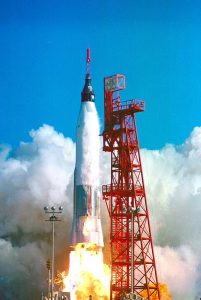 I’m sure that many of you remember the movie, Deep Impact, which was about a group of astronauts trying to save the world by deflecting a meteor, so it wouldn’t hit the earth. Robert Duvall played the part of Captain Spurgeon “Fish” Tanner, a retired, and largely considered by the rest of the crew, an “over the hill” astronaut. Nevertheless, in the end, they were glad they had him when it came to completing their mission, even though it did cost them their lives. Of course, the movie was fictional, and not realistic in many aspects, but the part that struck me as cool, was that the retired astronaut got a second chance to be useful in an important mission.
I’m sure that many of you remember the movie, Deep Impact, which was about a group of astronauts trying to save the world by deflecting a meteor, so it wouldn’t hit the earth. Robert Duvall played the part of Captain Spurgeon “Fish” Tanner, a retired, and largely considered by the rest of the crew, an “over the hill” astronaut. Nevertheless, in the end, they were glad they had him when it came to completing their mission, even though it did cost them their lives. Of course, the movie was fictional, and not realistic in many aspects, but the part that struck me as cool, was that the retired astronaut got a second chance to be useful in an important mission.
However, Captain Spurgeon Tanner wasn’t the only retired astronaut to get a second chance to go into space. On October 29, 1998, nearly four decades after he became the first American to orbit the Earth, Senator John Hershel Glenn Jr was launched into space again as a payload specialist aboard the space shuttle Discovery. At 77 years of age, Glenn was the oldest human ever to travel in space. During the nine day mission, he served as part of a NASA study on health problems associated with aging. Like our fictional Captain Spurgeon Tanner, Senator John Glenn was useful in space again. He had something that the other astronauts didn’t have…age. I don’t suppose that the studies done on John Glenn were the saving the world type, but they were real life studies, and that’s important too.
John Glenn became famous when he was chosen by NASA in 1959, along with six other men, to be the first American astronauts. He was a lieutenant colonel in the US Marine Corps. A decorated pilot, he flew nearly 150 combat missions during World War II and the Korean War. In 1957, he made the first nonstop supersonic flight across the United States, flying from Los Angeles to New York in three hours and 23 minutes. Then, in April 1961, the American space program suffered a setback of sorts, when Soviet cosmonaut Yuri Gagarin became the first man in space, and his spacecraft, Vostok 1, made a full orbit before returning to Earth. It was a feat that the United States had hoped to achieve first. The United States kicked things into high gear, and less than one month later, American Alan Shepard Jr became the first American in space when his Freedom 7 spacecraft was launched on a suborbital flight. American “Gus” Grissom made another suborbital flight in July. Then, in August, Soviet cosmonaut Gherman Titov spent more than 25 hours in space aboard Vostok 2, making 17 orbits. As a technological power, the United States looked second-rate, compared with its Cold War adversary.
If the Americans wanted to dispel this notion, they needed a multi-orbital flight before another Soviet space advance arrived. On February 20, 1962, NASA and Colonel John Glenn accomplished this feat with the flight of Friendship 7, a spacecraft that made three orbits of the Earth in five hours. Glenn was hailed as a national hero, and on February 23 President John F. Kennedy visited him at Cape Canaveral. Glenn later addressed Congress and was given a ticker-tape parade in New York City. It was at this point that NASA made the unfortunate decision not to risk the life of the now famous Glenn by sending him into space again. NASA essentially grounded the “Clean Marine” in the years after his historic flight. Frustrated with this uncharacteristic lack of activity, Glenn turned to politics, In 1964, he announced his candidacy for the US Senate from his home state of Ohio and formally left NASA. Later that year, however, he withdrew his Senate bid after seriously injuring his inner ear in a fall from a horse. In 1970, following a stint as a Royal Crown Cola executive, he ran for the Senate again but lost the Democratic nomination to Howard Metzenbaum. Four years later, he defeated Metzenbaum, won the general election, and went on to win re-election three times. In 1984, he unsuccessfully sought the Democratic nomination for president.
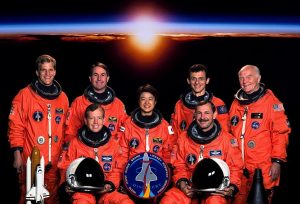
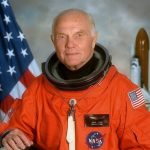
His really big claim to fame would once again come from NASA, which seemed to be his destiny after all. In 1998, Glenn attracted considerable media attention when he returned to space aboard the space shuttle Discovery. In 1999, he retired from his US Senate seat after four consecutive terms in office, a record for the state of Ohio. While his years in politics were much longer, he will always be remembered for the two historic flights he made into space.
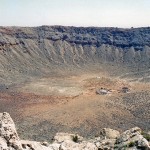
![is[3]](https://carynschulenberg.com/wp-content/uploads/2015/10/is3-e1444346657892-150x150.jpg) Most of us give little thought to things falling from the sky, but the reality is that it does happen, and more often than we think. There have been times when planes have fallen from the sky, satellites, and even space shuttles. One thing that we really don’t think about is meteors, but they too fall from the sky. We live in a solar system, and there are many objects in space that, if they get too close to our atmosphere, can get caught in it and fall to Earth. Most often these items are small enough to simply burn up in our atmosphere, and we view them as shooting stars, but some actually make it to Earth’s surface. I can think of a famous meteor, whose crater I was able to see when I was a kid. It is the crater that is located in Arizona, near Winslow. It is unknown how big that meteor was, because there is no documentation. Many people have suggested that it was quite small, but in light of more recent meteor hits, I have to wonder if it was bigger than they think. Of course, years ago, I might have accepted the theory that a meteor the size of a golf ball could make a hole the size of the crater in Arizona, but after seeing some of the more recent strikes, that just no longer seems logical, and my brain, being very logically wired, simply can’t buy into that, given the current knowledge that I have.
Most of us give little thought to things falling from the sky, but the reality is that it does happen, and more often than we think. There have been times when planes have fallen from the sky, satellites, and even space shuttles. One thing that we really don’t think about is meteors, but they too fall from the sky. We live in a solar system, and there are many objects in space that, if they get too close to our atmosphere, can get caught in it and fall to Earth. Most often these items are small enough to simply burn up in our atmosphere, and we view them as shooting stars, but some actually make it to Earth’s surface. I can think of a famous meteor, whose crater I was able to see when I was a kid. It is the crater that is located in Arizona, near Winslow. It is unknown how big that meteor was, because there is no documentation. Many people have suggested that it was quite small, but in light of more recent meteor hits, I have to wonder if it was bigger than they think. Of course, years ago, I might have accepted the theory that a meteor the size of a golf ball could make a hole the size of the crater in Arizona, but after seeing some of the more recent strikes, that just no longer seems logical, and my brain, being very logically wired, simply can’t buy into that, given the current knowledge that I have.
One of those more recent meteor strikes happened on this day, October 9, 1992, when a meteor about the size  of a bowling ball, came crashing down, and sliced right through a 1980 Chevy Malibu owned by Michelle Knapp. Michelle was watching television in her parents’ living room in Peekskill, New York when she heard a thunderous crash in the driveway. Wondering what could have happened, Michelle ran outside to check it out. What she found was shocking. There was a large hole in the rear end of her car, and a matching hole in the gravel driveway underneath the car. It was what was in the hole that was the most shocking, however. A rock about the size of a bowling ball, but, at a weight of 28 pounds, it was much heavier than a bowling ball, which can only weigh a maximum of 16 pounds. The rock was shaped like a football and warm to the touch, but the worst part was that it smelled like rotten eggs. Of course, this was all big news in the world of science, and the next day, a curator from the American Museum of Natural History in New York City confirmed that the object was a genuine meteorite. I’m sure that of all the things Michelle could have imagined hitting her car, a meteor was most likely the last.
of a bowling ball, came crashing down, and sliced right through a 1980 Chevy Malibu owned by Michelle Knapp. Michelle was watching television in her parents’ living room in Peekskill, New York when she heard a thunderous crash in the driveway. Wondering what could have happened, Michelle ran outside to check it out. What she found was shocking. There was a large hole in the rear end of her car, and a matching hole in the gravel driveway underneath the car. It was what was in the hole that was the most shocking, however. A rock about the size of a bowling ball, but, at a weight of 28 pounds, it was much heavier than a bowling ball, which can only weigh a maximum of 16 pounds. The rock was shaped like a football and warm to the touch, but the worst part was that it smelled like rotten eggs. Of course, this was all big news in the world of science, and the next day, a curator from the American Museum of Natural History in New York City confirmed that the object was a genuine meteorite. I’m sure that of all the things Michelle could have imagined hitting her car, a meteor was most likely the last.
Apparently, our earth is bombarded with about 100 pounds of meteoric material every day, however. Some are the size of dust particles, and some as big as 10 miles across, with the average being about the size of a basketball. So I guess that Michelle’s meteor wasn’t all that unusual. Meteors seem to be in the news more and more these days, and with the invention of dash mounted video cameras and other such surveillance 
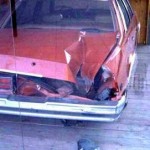 equipment, meteor strikes have been caught on camera, that never were before. Of course, any strikes that hit something were usually found, but those that didn’t might not have been known. I hadn’t really given much thought to the many times our planet has been hit, but it stands to reason that with all the space debris, it is a possibility. Personally, I hope that my car never has to sustain a hit like that, but I suppose that she got enough out of the incident, with the fame and all, to buy herself a new car…or maybe she had insurance on it and got it covered that way. As for me…I’ll just keep my car.
equipment, meteor strikes have been caught on camera, that never were before. Of course, any strikes that hit something were usually found, but those that didn’t might not have been known. I hadn’t really given much thought to the many times our planet has been hit, but it stands to reason that with all the space debris, it is a possibility. Personally, I hope that my car never has to sustain a hit like that, but I suppose that she got enough out of the incident, with the fame and all, to buy herself a new car…or maybe she had insurance on it and got it covered that way. As for me…I’ll just keep my car.

